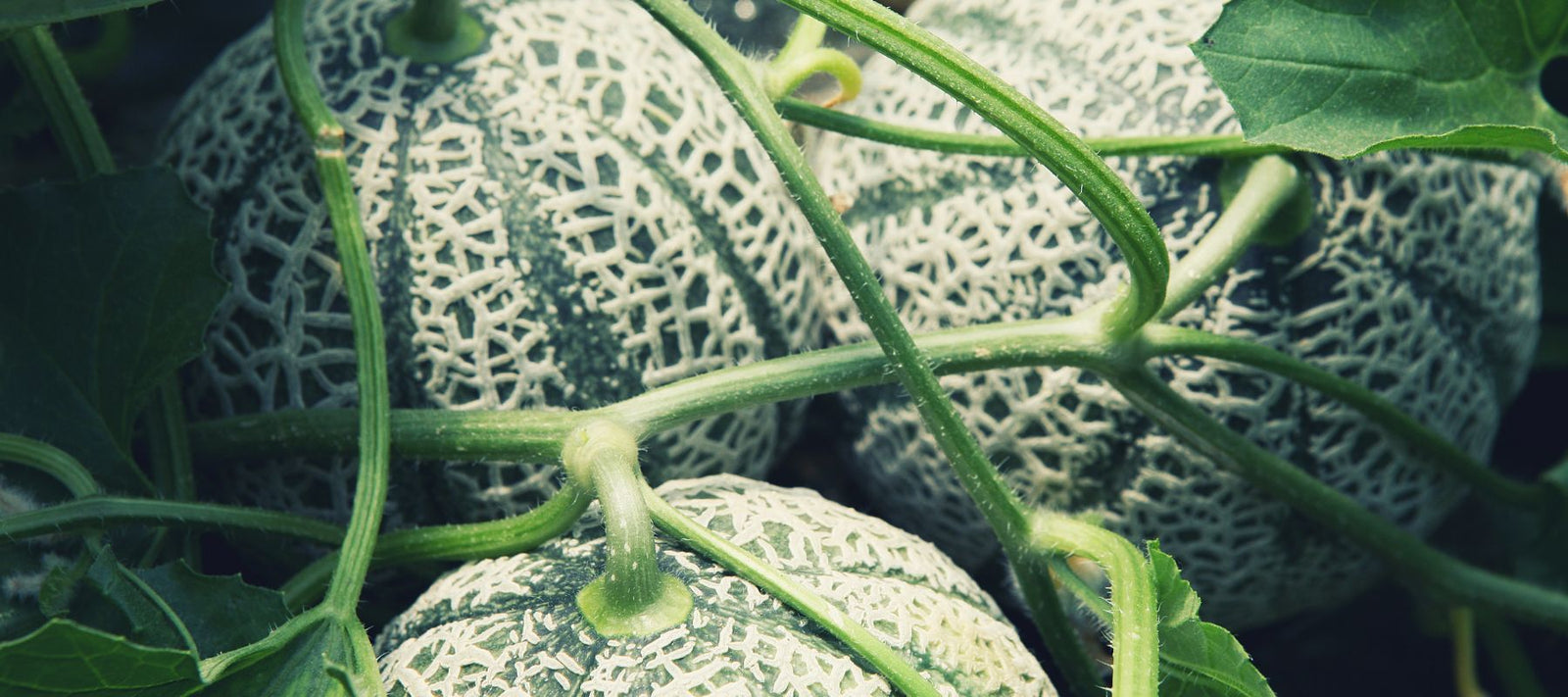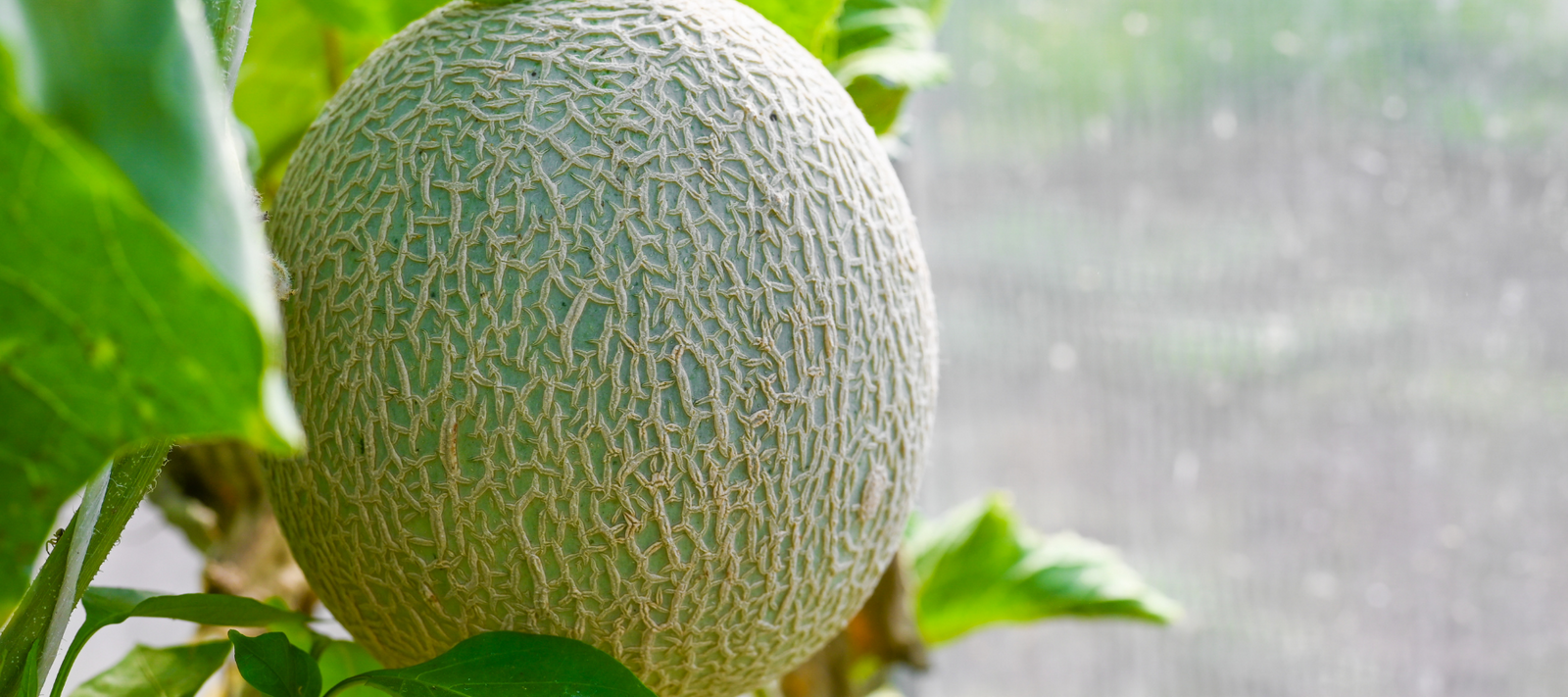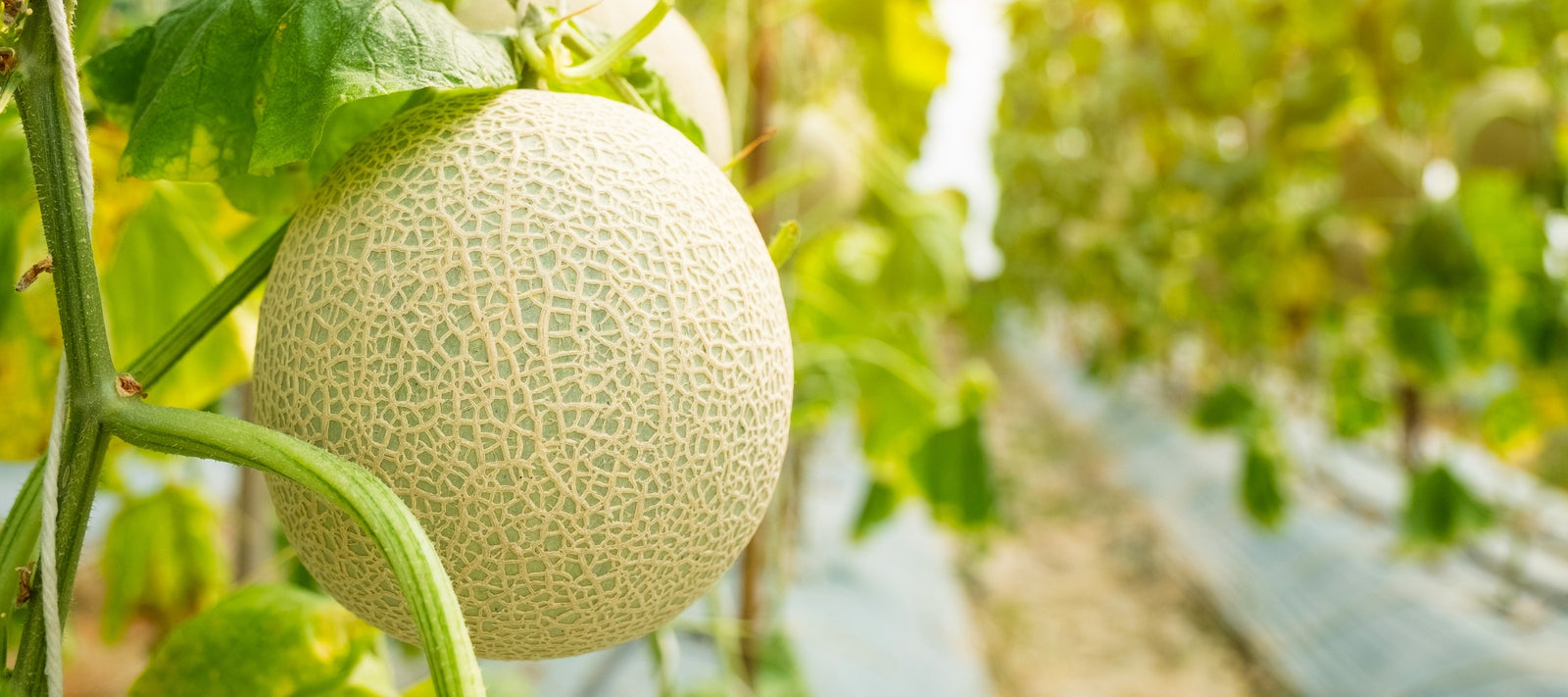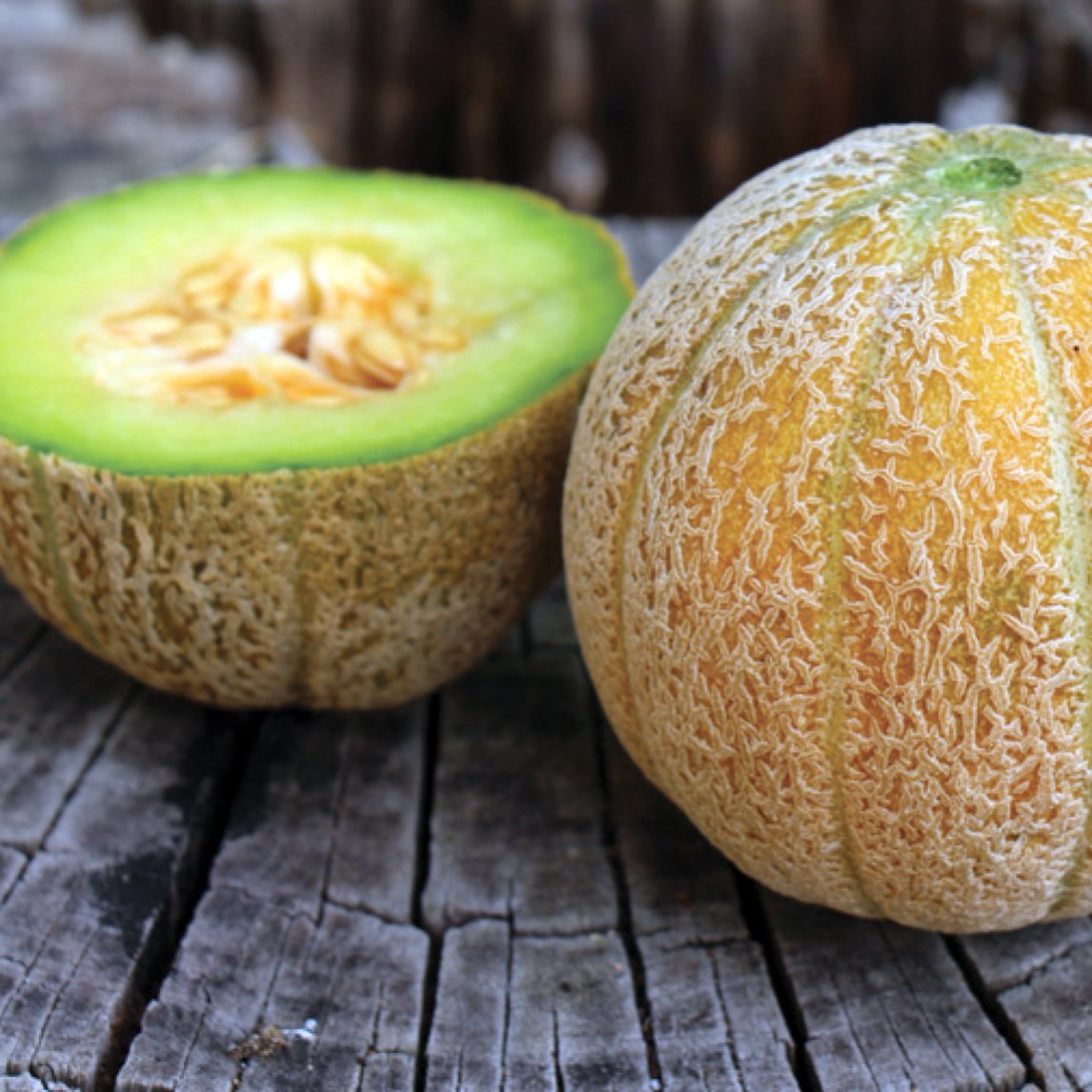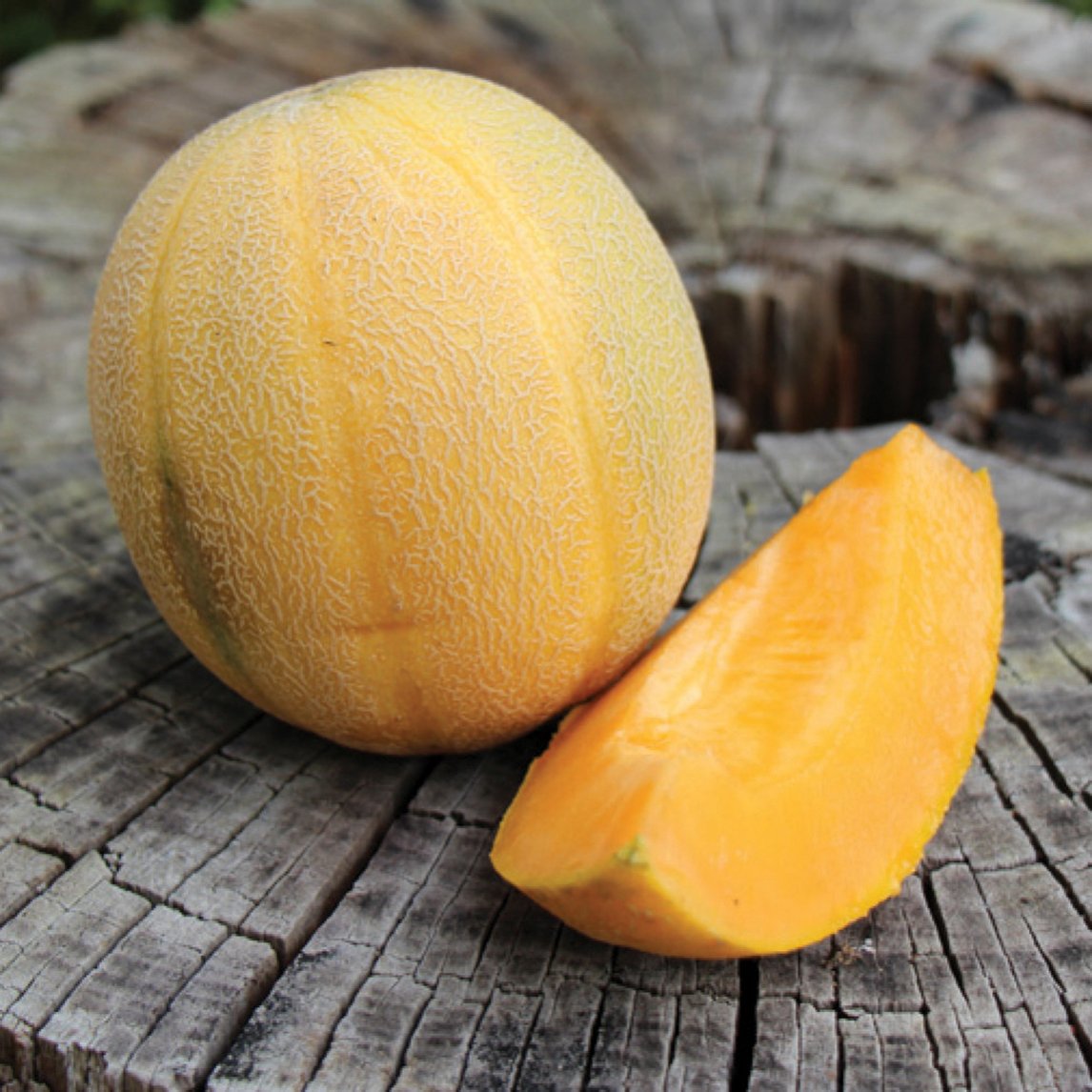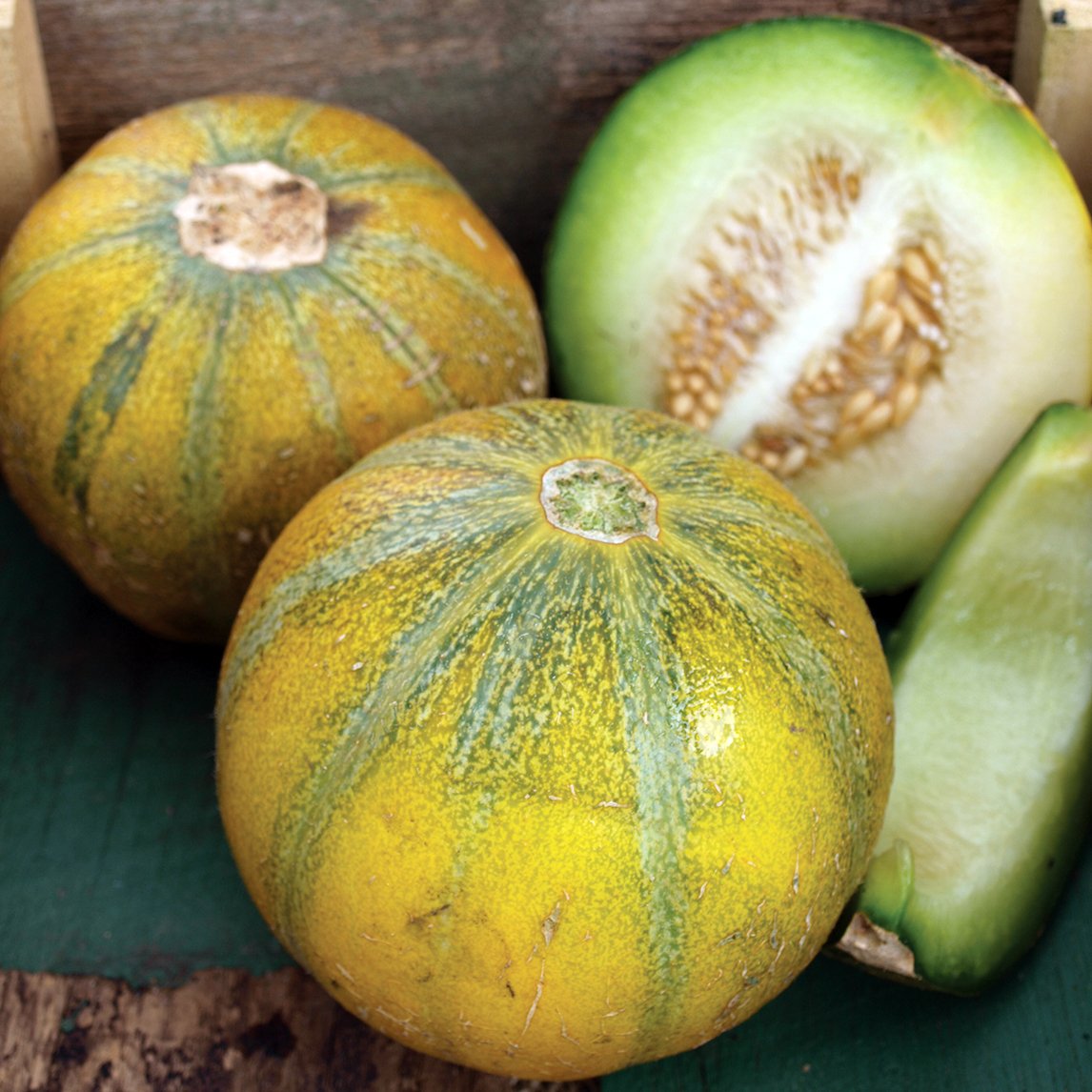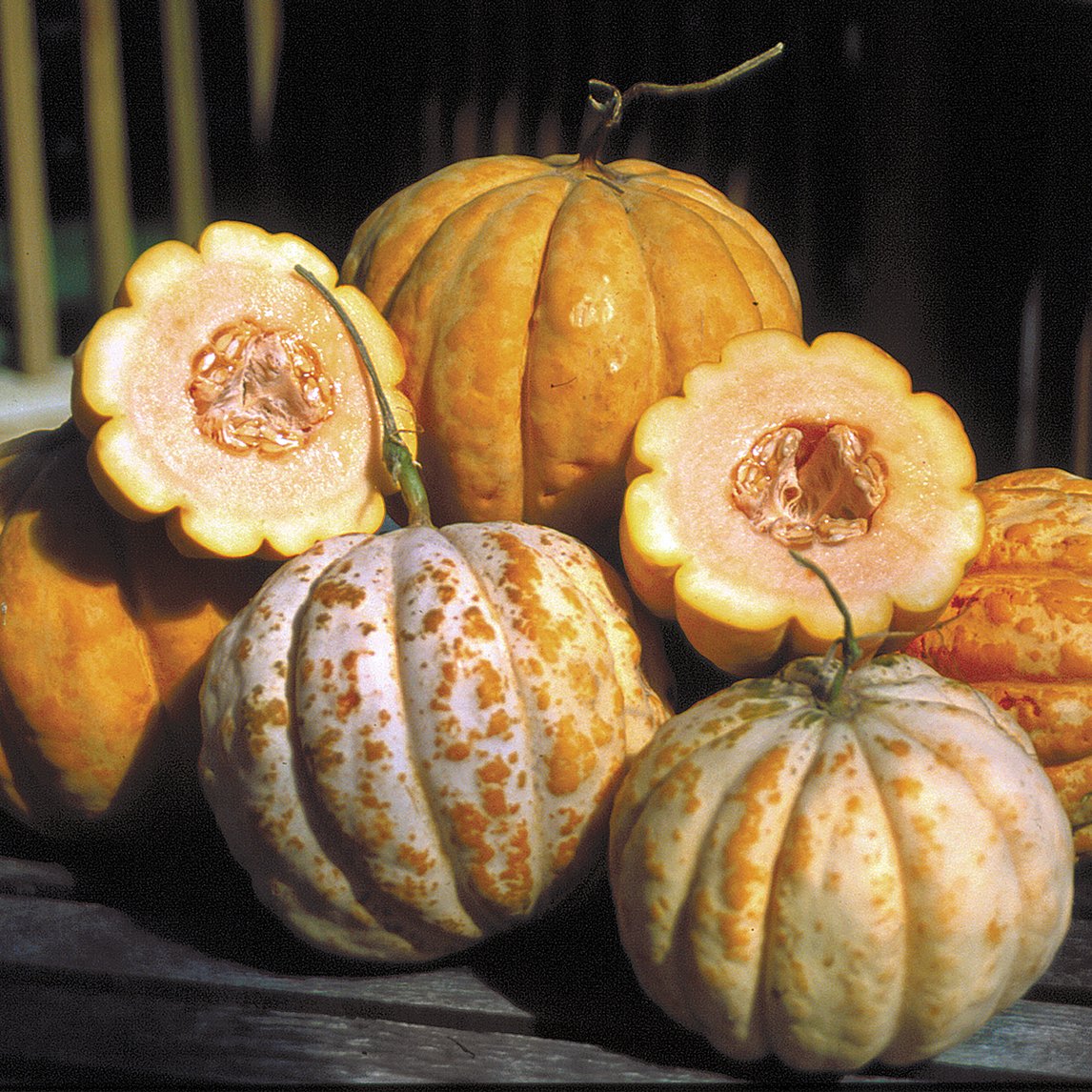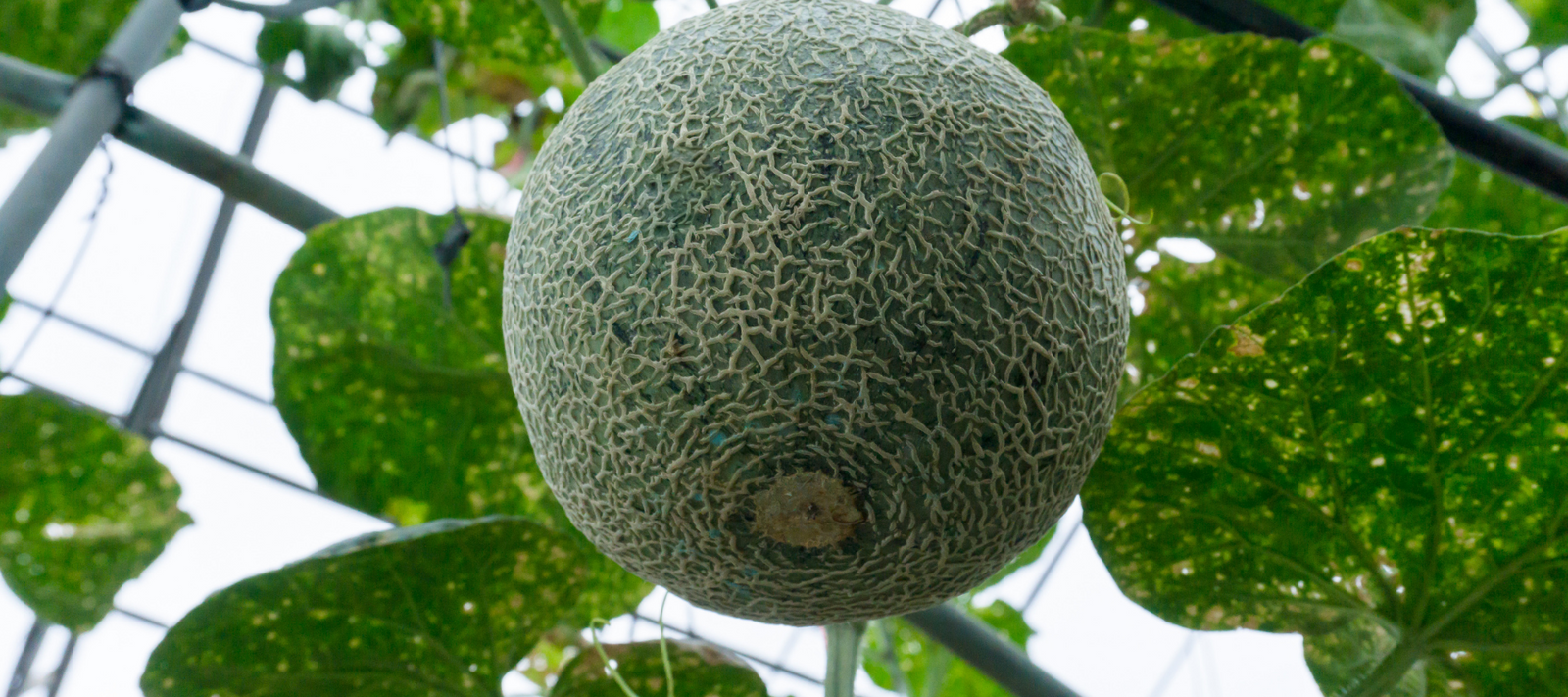
Botanical Name: Cucumis melo
Plant Type: Tender Annual
Melons are another member of the cucurbit family, there being a variety of species cultivated around the world, but the most familiar species is Cucumis melo.
It is thought that this species of melon has its origins in West Africa, though there is some speculation that it may have originated in the Middle East or Asia. This uncertainty is due to the fact that melons have been widely cultivated by different people for a very long period of time.
There is nothing quite like a homegrown melon left on the vine to soak up the sun and picked when it is perfectly ripe. Fragrant and sumptuous, a good melon is indeed a luxury.
As frost tender annuals, melons need to be started early in cool climates, but the extra effort will be rewarded. Although an estimated 90% of melon heirloom varieties are now extinct, there is still an amazing array from which the home gardener can choose.
What we commonly call cantaloupe is actually netted muskmelon. The honeydews, with smooth skin, store well enough to last through winter.
Varieties
As with other vegetables, selection of melon vaieties involves weighing up the desired qualities of flavour, earliness, productivity, climate, and disease resistance. Many of the heirloom varieties are smaller in size than some of the commercial types and are well suited to the home gardener.
If one is looking for an outstanding cantaloupe, then one cannot go past Sweet Granite. Smaller in size than the supermarket varieties, it, too, will perform in cooler climates. It produces fruit with salmon coloured flesh of excellent flavour.
There are a number of varieties of melon that are very different from what is normally expected by Australian gardeners, but they should be tried by all at least once.
Banana Melon is a variety suited to warm to hot climates; it produces moderate to large fruit that, when ripe, is a colour resembling that of a ripe banana, hence the name. The flesh is tangerine coloured and of excellent flavour.
For cooler climates, one candidate is the French variety Charentais that, in trials at Heritage Farm, performed well in cool summers. It is a small, aromatic melon with delicately flavoured peach coloured flesh. In other seasons, it did not perform as well. It does seem to possess good resistance to powdery mildew.
Another aromatic melon that does well in warm to hot conditions is the Israeli variety Ha-ogen. This melon is a true gem, because the flesh of ripe fruit has the colour and translucency of the finest emerald and an intensity of flavour and sweetness matched by few other melons. Ha-ogen must be on every gardener’s short list.
Cultivation
Melons are less tolerant of acidic soils than pumpkins, therefore the pH must exceed 6.0. There is a general belief by gardeners that melons do best in soils with a high organic content, and traditionally, in this country, large volumes of manure are worked into melon beds.
However, the necessity for manure is a misconception, because in various parts of the world excellent crops of melons are produced in sandy soils, the Middle East being a notable example. However, it is important to have adequate levels of nutrients present if melons are to do well, and so the traditional approach of using well-composted manureis probably the best one for the gardener.
If manure is not available, then some of the complete organic fertilisersare a satisfactory alternative.
Once plants really start to run, pinching out the leaders is an effective way of limiting growth, though some caution has to be exercised so that the plants do not become too limited.
The reason for this is the fact that melons are notorious for having poor fruit set after pollination by bees, with the failure rate being up to 80 per cent. Therefore, do not pinch out leaders until sufficient female flowers have set fruit.
To avoid poor fruit set, it is critical that your garden has a thriving population of bees so planting flowers that attract pollinators such as cornflower,nasturtium and alyssum is a good practice.
Sun: Full Sun
Pollination: Insect Pollinated
Soil: Rich, moisture-retentive soil with plenty of compost dug in.
Growing from Seed
Melon seed should be sown at soil temperatures at least as warm as those suggested for pumpkins (over 15°C), but, in our experience, this is on the low side and the soil temperature should be well above 20°C for the best results.
Formation of mounds for sowing as described for pumpkins is also recommended for melons, though the mounds can be somewhat closer at one metre because the plants are a little less vigorous. On average, the germination success and survival of seedlings tends to be less than that for pumpkins, and so it is best to always sow three or four seeds per mound and thin seedlings later.
Sow: Best direct sown once soil has warmed and there is no longer a risk of frost. If your growing season is short, they can be started inside in pots to get a head start.
Ease of Germination: easy
Germination Temperature: 24-35°C
Germination Time: 6-10 days
Spacing: 1 metre
Harvest: 80-140 days
Yield: 5-15 kg/m
Maintenance and Additional Care
Rock melon can be grown in a flat bed, but we suggest a mounded bed to improve drainage during the critical establishment phase. Sow three seeds per cluster to ensure adequate germination and as a backup for any losses.
To restrict their spread, they can be trained to a trellis. Simply allow the vine to develop and when it reaches at least 1m, tie to a trellis. As fruit develops, create a cradle using stockings to allow the stocking to support the fruit, rather than the vine.
Rock melon seeds will germinate in soil temperatures as low as 18°C, but seed should be sown when temperatures are over 24°C, ideally approaching 30°C.
Within this temperature range, seed will take up to two weeks to germinate at the lower temperatures and only a few days at the warmer end of the scale. The time of year when the soil temperatures are suitable for rock melon seed germination will, of course, vary according to climate and, for the novice, the best approach is to monitor the temperature with a soil thermometer and talk to local gardeners. From our experience, if the soil is warm enough to transplant tomatoes, then it is probably adequate for sowing melons.
Above all, though, the seed cannot be sown if there is any risk of frost, even if soil temperatures are high enough.
One approach that remains relatively unexplored by Australian gardeners is to grow melons indoors in glasshouses. Many of the smaller heirloom varieties are well-suited to glasshouse production, and this is a popular method for growing them in much of Europe.
This is particularly applicable to gardeners in cooler regions. In some cases, varieties that are not suited to the climate outdoors, can be successfully grown under glass.
cooler regions should select early varieties. Apart from considering your local growing conditions, we suggest that you try growing one variety from each of the melon groups, if possible, so that you can sample the full diversity of these wonderful fruits.
In time, you may find that you become fond of members of one group or members of different groups. We are confident that you will be wonderfully surprised.
Companion Planting
Good companions: Beans, sweetcorn, onions, leeks, and chives.
Bad companions: potatoes
Pests and Diseases
Protect seedlings from slugs and snails. Aphids may infest and can be sprayed off with a hose- encourage lady bugs as the larvae love to feed off the aphids.
Rock melon plants are particularly susceptible to powder and downy. Plant is a well-ventilated, sunny position to minimize the likelihood of infection.
Growing in Containers
While rock melons and cantaloupe are long trailing plants, they can be grown in pots if the roots are given enough space and you have room for their long vine.
A larger pot will hold the trellis if you wish to grow pumpkins in a small space. Always use a premium potting mix for vegetables and water regularly.
Harvesting
Harvesting melons is a skill based on careful observation. When ripe, the rock melon will turn a different colour to what it has been up until then.
If they are ‘netted’ (with rough, corky skin) the netting will be dense. Regular and raised. The skin will depress easily, but not break when pressed. Lastly, there is the fragrance of many melons that indicates that a season of nurturing has culminated in a mouth-watering melon.
Seed Saving
Seed Longevity: 5 years
Isolation Distance: 800 m
How to Save Seed
Pick the fruit at the peak of ripeness. The seeds inside the melon will have matured by this time and can be harvested as you enjoy the outer fruit. Cut the melon with a sharp knife and carefully scoop out the inner seed lining and save them for processing the seeds.
Place the seedy pulp into a bowl and remove as much of the pulp as possible by hand. Discard the pulp and add warm water to the bowl. You can then skim the surface of the water to remove seeds that will not produce plants, as they will be floating on the top.
Rinse the rest of the seeds once more to remove any remaining sugar and pulp and place on a screen to dry. Allow these seeds to dry for about 3 days. Place the seeds in a bag and mark with type of seeds they are and when they were harvested. Place the bag in the freezer until next season.
Tips and Tricks for Success
- After plants set fruit, feed twice, at two-week intervals, with a water soluble plant food.
- Mulch plants after soil has warmed to help maintain consistent moisture and suppress weeds.
- Always rotate your rockmelon crops from year to year to prevent disease and improve yields.



